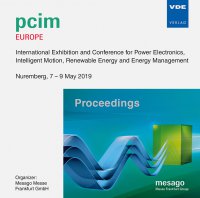Direct bonding to aluminum and nickel surfaces by pressure silver sintering
Conference: PCIM Europe 2019 - International Exhibition and Conference for Power Electronics, Intelligent Motion, Renewable Energy and Energy Management
05/07/2019 - 05/09/2019 at Nürnberg, Deutschland
Proceedings: PCIM Europe 2019
Pages: 7Language: englishTyp: PDF
Personal VDE Members are entitled to a 10% discount on this title
Authors:
Chew, Ly May; Schmitt, Wolfgang (Heraeus Deutschland GmbH & Co. KG, Germany)
Stegmann, Tamira; Schwenk, Erika; Dubis, Monique (Hochschule Aschaffenburg, University of Applied Sciences, Germany)
Abstract:
In recent years, silver sintering has drawn growing attention as a promising die attach technique for high temperature applications. Our previous studies have demonstrated that high reliable silver sintered joint was created on silver, gold and copper surfaces by pressure sintering. Current silver sinter technology required plating of precious metal finishing on the die backside and substrate prior to sintering process in order to form a strong sinter joint. Considering the manufacturing cost, it is of great interest to direct bond onto non-precious metal surfaces by silver sintering since the precious metal finishing is no longer necessary. In this study, we developed a silver sinter paste which is able to directly bond onto nickel and aluminum surfaces by pressure sintering without applying any surface treatment to remove the surface oxide layer prior to sintering process. Ag metallized Si dies were attached on nickel-plated direct copper bonding substrates and high purity aluminum substrates by sintering process at 250 ºC with a pressure of 10 MPa for 3 min in air atmosphere. The cross-sectional SEM images of sintered samples indicate that silver sintered layer is strongly bonded onto the Ag metallized die as well as onto the Ni and Al substrates. After Si dies were sheared from the substrates, SEM-EDX was conducted on the fracture surface and the results confirmed that silver sintered joint was created on Ni and Al surfaces. The EDX analysis results further demonstrated that an interdiffusion of Ag/Ni and Ag/Al occurred at the interface between sintered layer and substrate. In the present work, we also observed that die shear strength above 20 N/mm2 was achieved by slowly increasing the temperature of Al substrate during sintering process. In contrast, when the temperature of Al substrate increased rapidly during sintering process, the die shear strength appeared to be almost negligible, suggesting the formation of silver sinter joint on Al surface strongly depends on the heating behavior of Al substrate.


